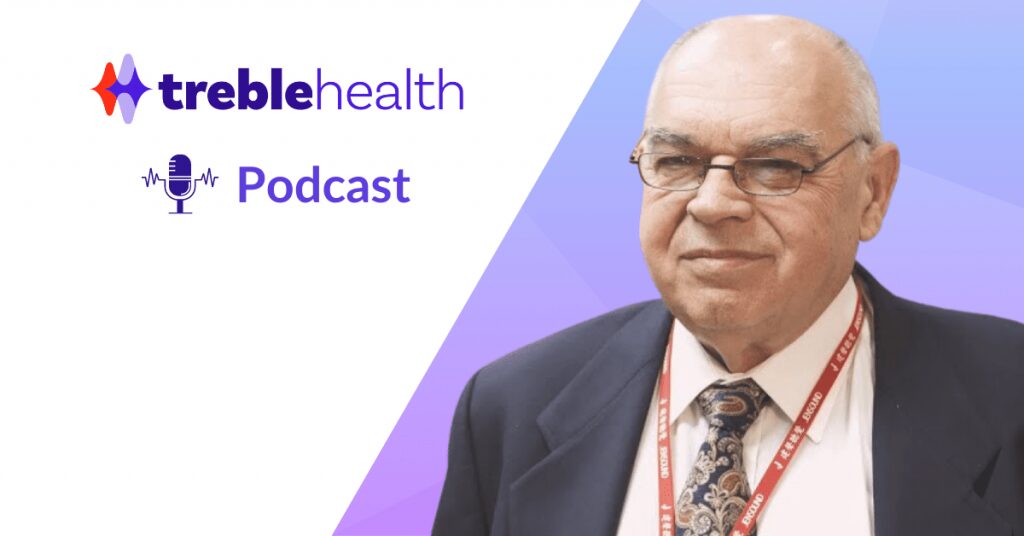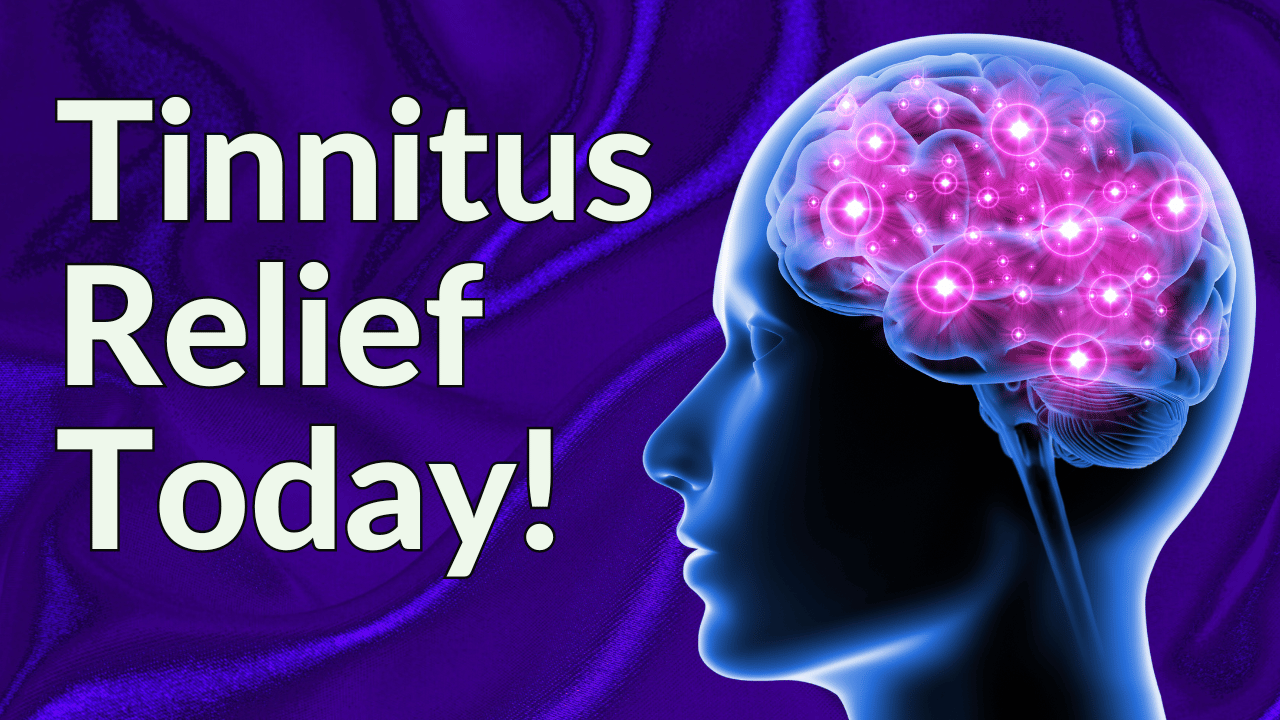Ben Thompson, AuD.
Hello everyone. This is Dr. Ben Thompson, Audiologist. We are here with Dr. Pawel Jastreboff, Ph.D., researcher, author and former professor at Emory University School of Medicine. Dr. Jastreboff has been a personal mentor of mine in the world of tinnitus. He himself has been dedicated to helping patients who have tinnitus for about 40 years. Through those decades of experience and a massive impact in our field, we’re going to chat with him today to learn about what are the best practices for managing tinnitus? What are the fundamentals of Tinnitus Retraining Therapy, and how that can be applied to you. On a personal note, I have learned so much working with Dr. Jastreboff and the Tinnitus Retraining Therapy Model is something that we use here with our patients. We use in the telehealth format and it works very well. Dr. Jastreboff, thank you for joining. This is episode number 50 of the Treblehealth podcast. Tell us a bit about what is the best treatment for tinnitus in your opinion and how can we use Tinnitus Retraining Therapy? So glad to have you here.
Pawel Jastreboff, PhD.
Well, obviously since I’m propagating TRT, I believe it’s the best method. I’m not saying the only, and I do hope that in future we have something even better than TRT. But so far, TRT is used in over 30 by now, five or six countries all around the world, different versions. And what is interesting, what is nice, that the results coming from all those country are pretty consistent. That means we have anything between 70 and 90%, an average, eighty something percent of success rate. And what is success? How we define the success? It’s not issue with just numbers, but having famous THI or TFI improve by some of the points, but that tinnitus or decrease sound trans is not affecting life of a patient in significant manner, or it’s not affecting at all. So, in putting this, in other words, we do not have a cure for tinnitus from the meaning of patient not hearing tinnitus anymore.
"Treble Health helped me reduce my tinnitus by about 80%, and now I can live my life again!"


"Treble Health helped me reduce my tinnitus by about 80%, and now I can live my life again!"
– Steve D.
Book a free consultation to learn which Treble Health solution is right for you. Join Steve and thousands more who have found lasting tinnitus relief.
As a neuroscientist who is working auditory system since 1970, I have a strong doubt that it can be achieved because of how our auditory system is functioning. So, I think that if you put aside so-called golden silence, it’s incorrect, it’s misleading. But what can be achieved, it’s possible to have effective treatment or even cure from point of view of tinnitus not affecting life, removing reactions induced by tinnitus. And, this is goal of TRT, that at the end of a treatment, patient can still perceive tinnitus when they focus attention on it. I have no problem with this. And normally we are not noticing tinnitus in everyday life. And I believe that this is, well, it should be goal of any method aimed on tinnitus. Not just improving coping, but removing the heart of this, removing problem. Tinnitus is a problem. And tinnitus is still, TRT is based on the neurophysiological model of tinnitus which I proposed in 1980, which creates a base foundation and scientific foundation for TRT and as well allows for checking, evaluating effectiveness of tinnitus and putting stress on the different aspects once we learn it. TRT as an implementation of the model, has changed during this nearly 40 years of its use and we’re seeing significant improvement mainly in the duration of the time which is needed for TRT. It’s one of the misconception, is that TRT takes a lot of time for professional and for patient. It’s incorrect. Yes, you need some time. You’ll not seeing improvement in a week or a few days. On average, patient are seeing clear improvement in three months. Some over only one month, some four months, and all treatment lasts between nine and 18 months. Well, these nine months, which is, I believe, a little bit of overkill, but I prefer to be safe not sorry. We’re not observing, and not only me, but other people, relapse of tinnitus. There was a special study done in Germany and in Italy showing that once patient got a good result with TRT, results remain stable, or even were tendency to further improving after three and five years from the treatment. So, I think that this is another very positive aspect of TRT, which other methods are not really showing or it has not been proven. So, this is why I believe that TRT is the best. And again, I would like to repeat, that if I know anything better than this, I will switch to it at once.
Ben Thompson, AuD.
Yes.
Pawel Jastreboff, PhD.
I’m not bind to this. I’m certain.
Ben Thompson, AuD.
That’s true. Me as well. And the habituation based protocols I’ve learned from you, I’ve learned from experience, the habituation based protocols are the best. That is our goal, that is what we should be striving for. You have helped thousands of people absolutely. And as well as the professionals who have trained under you have also helped many people. It is true, correct, that there are treatments for tinnitus and bothersome loud tinnitus after time, after counseling, after using sound therapy can improve significantly. Tell us about this, about the people you’ve helped over the decades. And I imagine that’s why you keep coming back to it. That’s why you’ve worked so many years in this, because it’s helping people in a very real way.
Pawel Jastreboff, PhD.
I have to confess that for half of my working life, I was not very nice from point of view of recognizing importance of clinical work. I was so-called basic scientist, you know, lab scientist, who was looking on everything and everything, which has any kind of a practical implication. I said, you fail you’re not worth really considering. I was working on cerebellum, auditory system, the cerebral system, pain, smell, many different things. With the main interest on brain plasticity, was always something which was core of my work. And, until 1983, when professor Clarence Sasaki who was chairman of ENT at Yale University. I was on my sabbatical from Polish Academy of Sciences, taught me that, you know Pawel, basic research is fine, but clinical research, it’s something which is, from one point of view, much more difficult because you are looking to see the positive results on the patient and as well is something which directly have an impact, hopefully positive impact on life of a patient. And it strike me because I always, for all my life, like thing to do things which other people are considering impossible. Like for example, creating animal model of tinnitus. When I created this everybody believed it’s absolutely impossible by definition. Now we have over 20 models, majority of them based on my initial model. And it was challenge for me to do something which is impossible. And Clarence convinced me, that indeed science, which has a clinical part and working with patient is very important. And once I start seeing patient in 1990 personally, and once I start seeing positive results of my work, I got addicted to this. And because of this, I’m still seeing patient although I’m formally and legally Professor Emeritus of Otolaryngology, heart and neck surgery at Emory University Atlanta, Georgia. I’m still seeing patients even today. And, seeing patient who’s life got converted, hearing from patients, and not only from patient, but from the families, how much positive impact my work might have keep me working although I should just stay and enjoying life. And I remember a few saying from a patient literally seven years old boy, it was who told me, “Thank you very much for giving my dad back to me, He was absolutely, he was like, not present. It was sad to see him.” Patient who was single, “Thank you very much, you saved my life. I was like a 10 years in prison and now I can do everything and anything without any problem.” So this kind of statements are extremely strong. Obviously there some patient I cannot help but in reality probably is about 10% of a patient whom I cannot help at all or very little. And that belonging to certain categories of a patient, I can predict with quite high level of accuracy, that I cannot help this particular patient. From other well, you never know if you’re in medicine, even if it’s a broken finger, that you get the 100% success rate. But indeed having over 80% success rate is very satisfactory to me. And of course I’m biased by seeing these cases, when patient are saying, well, you saved my life. Not necessarily literally, a lot maybe in some cases, but what one of my patient told me, it was a surgeon, who was, I believe helping people with cancer, people, and saving their life and I told him, you know, you are doing very, very important thing because you are saving life of a patient. And he told me, “No, Pawel, you’re wrong, because I can save a life of a people, but you are saving quality of a life. You are giving patients back normal life when previously their life was misery.”
Ben Thompson, AuD.
And it took me experiences of being in that position of helping someone and having those same stories that made me fully believe Tinnitus Retraining Therapy works. It made me fully believe in habituation. It showed me that tinnitus can reduce in the perception, in how often, how much it bothers us, that it can improve. And oftentimes the volume can get softer too through that process. Not always, it’s not necessary, but it can happen. That message is not shared, if someone goes on the internet, that’s not what they find. In fact, they find the contrary. If they go to the average ENT doctor, the ENT clinic, they will get a message of sorry, nothing to do, nothing I can help with. So, that is our first main message here, Pawel, that we can help patients and I learned this from you. I learned this from the mentors in the scientific community who’s helped me with this. Now, what is the fundamental approach of the counseling, of the professional one-on-one time with a patient? Why is that so important? Because I’m sure you’ve asked yourself, does this really need happen between a professional and a patient? Is there another way that an individual can habituate or is there a better way? Why is it that one-on-one is your recommendation and what other information is relevant here?
Pawel Jastreboff, PhD.
Well, it’s an excellent question. First of all, I would like to briefly comment about this loudness of tinnitus. Indeed on average patient are experiencing decrease of a perceived loudness of tinnitus to about half. Some more, some a little bit less. But it has a rule. And it has a actually good physiological explanation why it is happening. Perceived loudness tinnitus is decreasing as a result of TRT. And as well, and we published paper, Dr. Hazel, I think 1994, 95, in hearing research, showing that when you achieve successful treatment of tinnitus with TRT, it’s not only loudness going down, but as well, it’s easier to suppress or make tinnitus weaker. Is just, you can think that in auditory system we have like a filters with tune to tinnitus, and then after TRT, they get broader. So less of external sound is enough to affect tinnitus perception, not necessarily masking, necessary covering, but tinnitus perception. And is the result of 100 patients, I think it was quite powerful data. Now regarding counseling, and one, counseling , individual counseling is so important. You can do part of a counseling in like a group or general, provide general information, but you’ll be not as effective. TRT, because of again, what model is teaching does need to take into account individual patient. It’s not exactly the same counseling for every patient, but you need to take into account what is happening with the patient and why. TRT, in nutshell, it’s retraining the brain, literally retraining brain. Teaching brain to do new tricks, teaching brain to do something differently that it was done previously. And teaching these change involves changes at subconscious level over which we do not have a conscious control. You can think more that it’s similar to learning how to play golf differently or how to drive bicycle or motorcycle, or even drive a car. It’s a retraining condition reflex-based activity, which is happening at subconscious level. So as a part of doing this, because you cannot just change it by thinking, well, I can not think, I know tinnitus is nothing important. I’m not going to get deaf or so. It’s just sound. Why should I bother? I’m not going to hear it. It will definitely positively not work. It should be like, proverbial. I’m not going to think about pink elephants. What you’ll be doing, you’ll be thinking about pink elephant. So the problem is with since… And I did some study on over 300 patients, which result of this show that actually in chronic tinnitus the problem is in this subconscious connection and not in the conscious thinking connection, like a two loops, one with a thinking conscious and subconscious. And it turned out very loud and clear, that it is subconscious connection, which are responsible for our problem. And again, this connection, we cannot change easily directly. We cannot just do something and it’s not gone. You need to use other methods. And what I am using, I am using combination of methods, starting from what we learn from Pavlov conditioning, who create the concept of condition reflexes, and even more what I learned from professor Konarski. I happened to be last student graduates, and I got a PhD from Konarski just before, when he died, unfortunately. And Konarski was student and competitor of Pavlov. He actually invented what is known now, here as operant conditioning, which he was calling condition reflexes. As well as create the term, which are now using for thinking brain plastic. It was Konarski who coined this term in 1940s. And my PhD thesis was about auditory projection to cerebellum, electrophysiology electrical activity of the brain. And I hate condition reflexes. And I was arguing with Konarski all the time. I was stupid and brave enough to do it. And he was man of iron fist, Nobody was arguing with him really. But I was doing this, somehow survive it. And through this discussion, I learned deeper about condition reflex and what to do, how to change them, how to deal with so-called superstitious condition reflex, or well, how important it is to consider complex condition stimulant on so far, which later on many, many years later, I use in practical implementation in TRT. So, because of this, without going into all detail, patient needs to understand, tinnitus or decrease sound trans very deeply so the subject becomes better. unpleasant than some, but so-called boring. It’s nothing more to think about for a normal question about this. And to achieve this you have to have a very deep conversation and counseling your patient, just sometimes go direct counseling. You are passing knowledge with the patient. Counseling session TRT is to largest and teaching and you are working with patient like with a partner. It’s not just you’re giving lecture it’s scattered around, that’s it. You need to discuss things over with the patient. And because of this one-on-one counseling is so important. And it’s another very well-recognized established rule in our behavior, that if you are exposed to situation with known danger, our reaction, anxiety and everything, is less than if we’re exposed to unknown danger. If you are in dark room, and doesn’t know what’s going to coming over, you know, but probably some dog or something which can attack you, but you have no idea what’s going to come well, this you’re getting, up to a limit of your reaction. If you know exactly what is going on, what might be happening, that’s just a dog, nothing else, you’ll be still unhappy still inside but not as big. It was very nicely as well, put into the famous Edgar Allan Paul, one of his novels stories of a pendulum, and it is just going this direction and showing if we know the danger, if we understand danger by definition we start reacting less. And this is part of a TRT counseling. It’s not all, but part of it.
Ben Thompson, AuD.
And when you say reacting less, it’s important for us to remember, this is not my choice, a reaction of emotion or something. This is a deep brain reaction, which is happening all the time as we have all this sensory information coming through, correct?
Pawel Jastreboff, PhD.
Exactly. The issue is that we can control our behavior or what we are doing, but we cannot control our feeling, our emotion. If you see snake on the floor, you can do whatever. But if you know, that it’s a poisonous snake, for example, you have all fear, fight or flight reaction, if you like it or not. The same condition reflexes, the creating of conditioning reflexes, which are creating problems, But then it is outside of our control. Because one of the fundamental rule of conditional reflexes is that you do not need to have any logical connection between stimulus, for example sound, and something that happening to it, can be purely by chance. It’s enough that two things happening at the same time to create reflex. And even if we know, if we know these mechanism, we cannot defend ourselves from creating this reflex. But if we don’t know, it makes pretty simple situations even worse.
Ben Thompson, AuD.
Explains why one-on-one counseling and that educational component between the professional and the patient is so important. It’s something that we believe in, our audiologists have appointments just like that. The other major part of Tinnitus Retraining Therapy is a comprehensive sound therapy program, sound therapy. Dr. Jastreboff, how did you come up with this theory that sound therapy could help? And what have you found over the decades of implementation and adjusting the protocols for the recommendations?
Pawel Jastreboff, PhD.
Sound therapy works on the number of a different dimension. It’s not just simple, it’s not for example, distraction or so as people are claiming. And actually the fundamental part of any sound therapy is based on the well established neurophysiological neuroscience fact is just outside the one in discussion with all our sensory judgment of sensory stimulus, for example light, sound or so. The same as moving the brain perception of a strength of a stimulus depends on the difference of the background. And it’s like this, that if you take a small candle, I just happen to have a candle here, ’cause I like it. And if this candle which is not powerful, it’s like a birthday candle, was put in environment which is totally dark, the light of this candle would appear to be much brighter, that even now when I have some light coming through a window. And part of this is adaptation, but practice because again, all our senses are judging strength of a stimulus and reacting as comparing with some background. So, exactly the same sound of tinnitus, and what is… Sorry, I should correct myself. There is not such a thing like a sound of tinnitus. It is absolutely a real perception of a sound, which is perception of neuronal activity within our auditory system, which we perceive as just sound. But there’s no vibratory activity in our inner ear or outside, which can be linked with tinnitus. Tinnitus, is phantom auditory perception with the meaning, but perception is absolutely real, the same as a Phantom limb or Phantom pain, but there is no physical sounds outside. So strength of a signal within the brain will depend how much of t’s background neuronal activity is going on. And this background neuronal activity, which is, part of is spontaneous, it’s running all the time, but part of this is evoked by external sounds. So by controlling level of external sounds, you can control the level of a tinnitus signal. And the goal, what is in TRT, we’re not trying to suppress, to mask tinnitus signal, and which in practical terms is not possible for longer periods of time, more than maybe 10% of a patient, maybe 15. But we’re trying to make it consistently weaker. And I like analogy, example of a patient as example of the old style vaccination against flu. Not which we have a against COVID, its a different principle. And what’s happening in this case of an act of vaccination? You are just injecting subject with a weak virus or weak bacteria, or even that, and body learn how to fight this much weaker virus or the bacteria, create antibodies.
So when we are exposed to a full-strength virus, well, you are not sick, or are sick much less. So in this case, what we’re doing, we’re exposing brain to that weaker tinnitus signal consistently for long periods of time, weeks or months. So brain learn how to control, how to block the signal. And when you remove this extra helper, with this external sound is fine. So because of this, it’s the easiest way of achieving this is through these ear level devices, that I so frequently use. Additionally in case of tinnitus about 80% of a patient have some hearing loss and help with the hearing is expanding the frequency range and extend of the stimulation of auditory system. So because of this sound therapy is helpful. It’s a one of a, it’s not the only one. And as well, ear level device can be so useful. And again, in case of audiologist who are specialist with this. So it’s easier for when psychologist cannot do it. For example, you cannot really implement use of instrumentation. But I would like to stress it’s not all. You have other components, you have a components of control. For example, patient but with decreased sound trans can use changing of this level as a creating shield between themselves and external sounds at the different thickness. The same case of a tinnitus, tinnitus is changing. But first of all, the level which patient can take the sound, this level which is inducing interest is changing from day to day. So in TRT is crucial that patient have power of changing the sound level at everyday basis. And limiting this like, unfortunately happen in some of a clinical study to only four Decibel is big mistake. And basically if you are doing this limiting, you don’t have a TRT. You have some method, we’re choosing counseling. And counseling is always helpful, providing with good counseling through. Bad counseling, will actually make the situation worse. But giving patient feeling of control is helpful as well. Last but not least, in case of misophonia, that means your reaction to specific patterns, specific to a given patient, patient pattern of sound like eating, clicking or whatever else or voice, music is frequently used, because of a specific effect of music has on us. And again, by certain rules, how this music should be selected, how to apply this and so on and so forth with special protocols, so-called protocol, level one for misophonia But again, music is used as well. So if a different type of a sound, and depending on that specific situation of a patient, specific case of a sense patient using different type or different mixtures of this approaches with sound.
Ben Thompson, AuD.
Yes. I’m happy to say that since studying formal Tinnitus Retraining Therapy with you, for tinnitus, for hyperacusis, my personal quality, my personal standard of care has increased and I’ve seen the benefit it has to patients. Now we may be listening to this and thinking, okay, so one-on-one professional counseling, that is very focused, very focused on this conditioning, on this brain retraining, right? That’s very specific, plus comprehensive sound therapy that’s set up by an audiologist, that is the method. That is the foundational approach here. One thing that breaks my heart is when I see or meet people who have tried all these different alternative therapies or experimental treatments, yet they have not been educated or they have not tried the foundational approach of Tinnitus Retraining Therapy, of professional counseling plus dedicated sound therapy. Would you agree that, that is the foundation? From there, it’s possible to try different things, like more relaxation-based approaches or other things, but we must first have this strong foundation and there must be a professional who’s guiding the individual, the patient along the way. Would you agree with that?
Pawel Jastreboff, PhD.
Yes. I agree with this. And I would like to point out that there’s nothing wrong with using what I’m calling adjunct relaxation, mindfulness, or whatever. Can help by making process of retraining brain easier. It’s more difficult to retrain patient who is at the end of a rope and who is extremely unhappy and cannot do anything, and thinking about anything but tinnitus. So it’s helpful, but stress release therapy and so on are not sufficient by itself. As an adjunct can be great. And one of the problem which we are facing, with many patients all around the world, but particularly in the United States are going the direction of a medication. And medications, majority of medication are just not really bad. All medication have negative side effects. But for, like, antidepressants as well, side effects are not very bad. The problem which I have, and it’s a big problem, is issue of benzodiazepine, Xanax, Klonopin, Valium and so on. And why? I’m not even getting into those that are addictive, changing personality and so on and so forth. They can promote suicide even, or facilitate suicide tendencies. But they are decreasing brain plasticism. And what TRT, an actual method which has any component of interacting, counseling patient have is, that you need to have a brain plastic, can change, can learn. And it’s very nicely shown in case of TRT as well. Children who have a very plastic brain are doing extremely well in TRT, very fast recovery, very big recovery. While elderly, slower, so to speak. Range of my patient is from five to 95 years old. And patient on benzodiazepines are showing recovery much slower and even the high dose of benzodiazepine, let’s say two milligram Xanax per day, the chances of helping this patient is very minimal. It’s one of a category of a patient, which is in this 10% or so patients, whom I cannot help. If somebody is in the high level of benzodiazepines, it’s really practically impossible. And again, the problem is with one third of my patient are coming to me on benzo. And I cannot do anything because I’m not MD. But I can refer them to an MD who is prescribing this medication. So they patient and this MD can discuss and decide what’s the approach.
Ben Thompson, AuD.
It’s an important topic. It’s a very important topic. And thank you for explaining that. Dr. Jastreboff, you have written a book about Tinnitus Retraining Therapy. I can recommend that as a good resource for patients who want to read about these fundamental principles. Additionally, if individuals are looking for that one-on-one counseling or that Tinnitus Retraining Therapy find an audiologist who has been properly trained. You can reach out to our team. You can find our team at Treblehealth, or you can reach out to the online community where there is a resource center for audiologists who have been trained in Tinnitus Retraining Therapy. Please contact us. We can help you find that if you’re looking for that information. Dr. Jastreboff, what is the last message you have for our community here? I want to personally thank you for saying yes to this invitation and for joining me for the 50th podcast episode here on the Treblehealth podcast. It’s a pleasure to have you. I love your science background. I love your dedication to this field. And some people have frustration because there is no cure. There is no fast, quick treatment for tinnitus, but let us not confuse that you and many other scientists have dedicated years and focus and a lot of work into trying to solve this problem, trying to get closer into the best practice, the best treatment available. So from everyone who has had tinnitus or who currently does, I say, thank you. And I want to pass it to you to share any last words with our community here.
Pawel Jastreboff, PhD.
I think that the most important thing to remember is that a lot can be done. And I believe that TRT can give patient more than other method, but other methods, even just using sound, can be helpful. That’s one thing. Second, it’s important to do these things combined as a part of a structured program. For example, I’m against approach which you have typically in literature, that trying to separate effect of counseling and effect of sound therapy. It’s for me a little bit like trying to analyze separately role of oxygen and hydrogen in water, you know. Oxygen and hydrogen is a totally different feature. If you combine them and got water, water has a totally different properties with hydrogen and oxygen separately. It’s not perhaps as dramatic, but I believe that interaction and combined effect of counseling and sound therapy, this is what is giving power of TRT. But again, most important thing is to remember, that a lot can be done. And I again, I would argue, we do not have a cure for perception of tinnitus, but I believe we do have a cure for tinnitus as a problem and this which counts. And once patient are not suffering because of tinnitus. Classical example of this is one of my patients, one of my special patient whom I am allowed to talk about William Shatner, captain Kirk taught me something which really stick in my brain as a very nice, very urgent presentation, is extremely intelligent man. I do not have it. He’s not my patient. Was my patient 95 or so. For ages he’s in perfect shape. Although his tinnitus was substantial. And I had to, I don’t know, some contact with him, two years ago. He was referring to me somebody or so. Then I ask him, “So how is your tinnitus, Will?” How you are doing?” Then he told me, “You know, I’m not bothered at all. And I’m perceiving this maybe 10, maybe 20% of the time. And it’s happening only when assembled on the star Trek conventions grabbing me and telling about their tinnitus.” And I know as well from my own life, for example, I’m not perceiving my tinnitus at all. Except when I’m talking about this, or talking with a patient. And even then not always. I have a very small proportion of it and I can hear it if I focus attention, although sometimes I even cannot hear it even then. And this is state, which we can achieve with a patient. And I believe that this is, which is as good cure as you can imagine, cure to tinnitus as a problem, not tinnitus as something to perceive. And education, both professions and general population is extremely important. It’s a coincidence factor, but we just had the last year, 50 course, TRT course in United States. We’re having more than seventy abroad, but it was 50 course of TRT. So we have a 50 number for you, 50 for us as well. And the same as UFMO, hopefully we’ll have again a few more courses, TRT courses for teaching professionals, how to use TRT to treat tinnitus and hyperacusis patients.
Next Step: Book Free Consultation
- 75% of patients reduced their tinnitus within three months after following our recommendations.
- "I feel like Treble Health literally gave me my life back." - Randy S. (verified customer)
- Join thousands of people who have reduced their tinnitus after scheduling a free consultation.


















